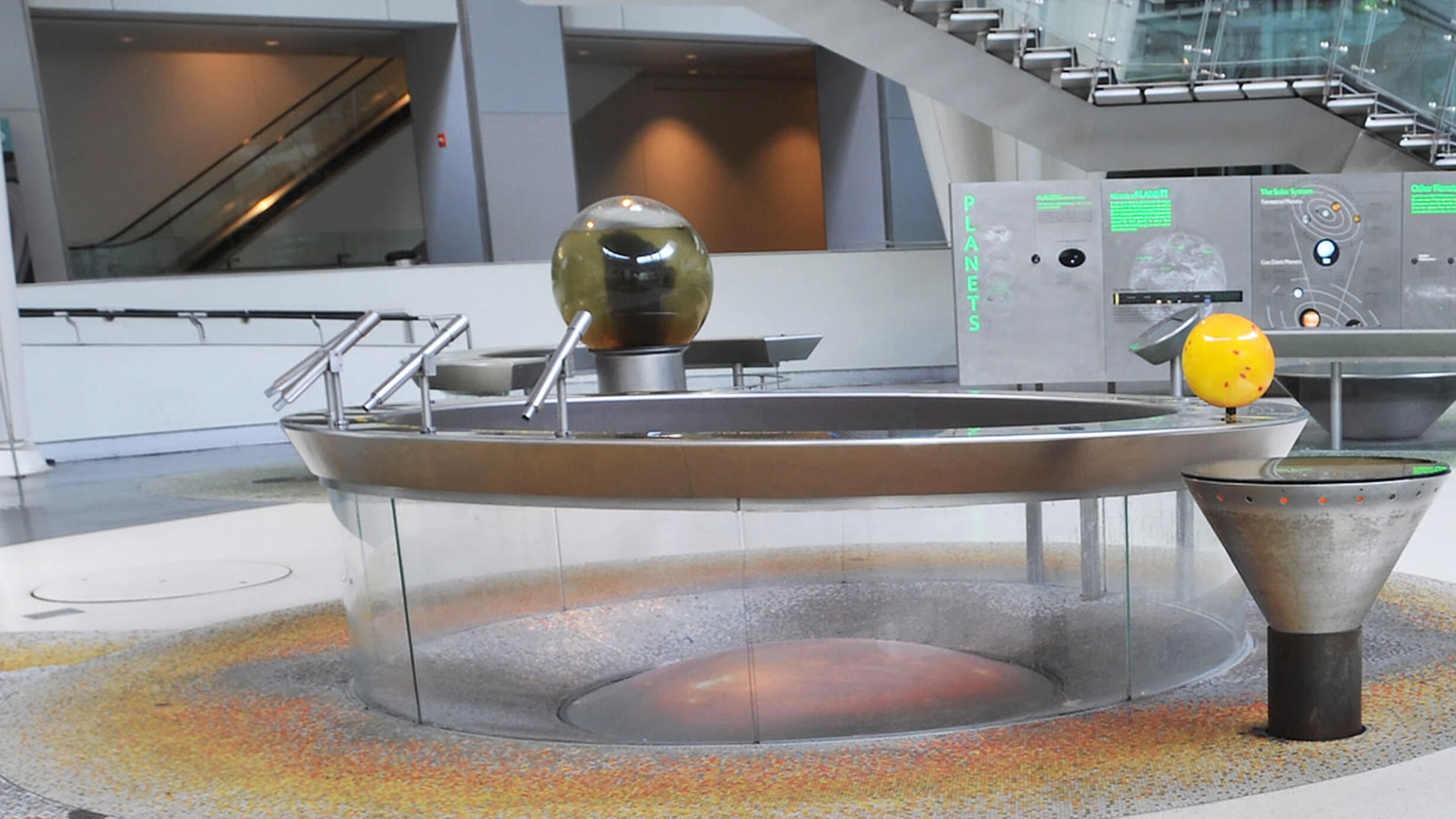The Search For Life In The Universe
Part of Hall of the Universe.
 © AMNH/D. Finnin
© AMNH/D. Finnin In the search for life, we have barely scratched the surface of other planets in our solar system. And we have studied only a tiny fraction of planetary systems around other stars. No life has been found, but the potential for life is widespread. The chemical building blocks for life on Earth exist in the interstellar clouds that give birth to stars. Many stars have planets. There could be billions of habitable planets in our galaxy. Yet we do not know how life arises, or if it can easily evolve to intelligence. Life may be plentiful - the only way to find out is to search.
How do we find other planets?
For life in the universe to be abundant, planets must be abundant. But planets are hard to detect because they are small, and much fainter than the stars they orbit.
How does life begin?
Scientists do not yet know how the first living things arose on Earth. The geological record shows that life appeared on Earth almost as soon as the young planet was cool and stable enough for living things to survive. This suggests that life may exist wherever conditions allow it.
The chemical building blocks of life, such as amino acids, are easily made by supplying energy to a mixture of the molecules most abundant in the solar system.
But these molecular substances are nowhere nearly as complex as the simplest life-form. We have no yet discovered how aggregations of these building blocks acquire life's capacity to grow, reproduce, and adapt.
Astronomers also observe organic molecules in meteorites comets and the giant interstellar clouds of gas and dust where stars and planets are born.